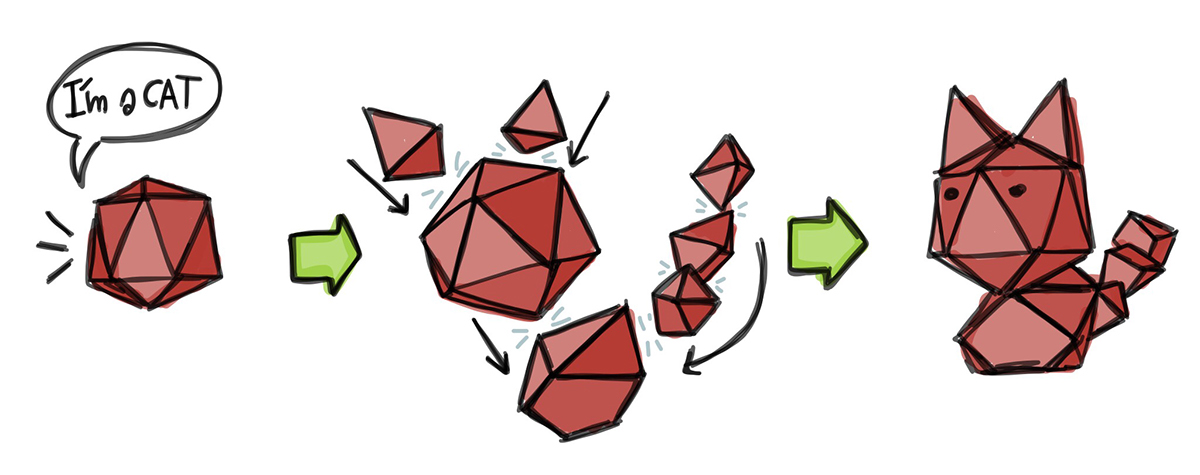Tommy is a low-poly construction set composed of various types of blocks of different shapes and sizes that can be joined together thanks to magnets on the inside. Triangular faces invite the player to build completely different constructions than the traditional squares. We also explored how technology can contribute to the creative development of children and added some electronics to the main component of the set to make the game more challenging. Moreover, a small story-telling component is included, giving personality to the actual toy.

Research
The product is targeted at 3 t0 5-years-old children. The target group was a bit challenging to approach, but, at the same time, offered us a completely new user research experience and insights. We therefore, started our design process by conducting user studies to understand the requirements of the little ones and their parents. We individually interviewed a group of parents (n=7) and observed children behaviors with building blocks. With the results and insights that we received from these user studies we continued our design exploration.
Design
Inspired by the growing presence of low-poly shapes in art, design and architecture we decided to see if these kind of shapes could also function as building blocks. We found out that they are more interesting and very different compared to the regular building blocks, mostly in the way they invite the player to build completely different structures than the square blocks do. The square blocks trigger the building of houses, castles and other construction works, while triangular shaped blocks stimulate the building of more organic, irregular creatures. From our conversations with parents we found out that magnets are incredibly intriguing to small children. That’s why our blocks are magnetic, which makes the interaction very interesting and smooth for them.

Early prototype
One of our biggest challenges in this project was to design the different types of building blocks in our set. We started with an extensive prototype session to decide which kind of low-poly shapes would be the best and what size the blocks should have. We made various prototypes from folded paper and glue with which we played for some time to decide which pieces facilitated the best building experience. It was very important to test whether it was really possible to build the actual animals and creatures we had in mind with the designed blocks.

In the end we chose four types of shapes with only triangular faces.

Interaction
Our decision to integrate technology into the building blocks wasn’t straightforward. In fact, the parents in our user studies were sceptical about it. However, we kept in mind the parents’ concern regarding the use of technology. Therefore we realised that if there would be some technology included, it should be extremely unobtrusive, keeping the player focus on the actual blocks.
For the above reasons we decided to let Tommy assign building challenges to the player. When the player shakes the main block, it makes an animal sound, suggesting the player to build that particular animal. This gives Tommy and added value over traditional building blocks while keeping the focus on creative building.
Technology
We used an Arduino Uno for the realisation of the sound functionality of the main component. We connected it to an accelerometer to detect shaking, to an SD card reader to store the audio files of the animal sounds, and a speaker (amplified with a transistor) to give the actual sound feedback.

Blocks development
For the high-fidelity prototype we chose to 3D print all the blocks (with a plastic material). This was the simplest way to create the irregular 3D shapes that we desired. For the printing, all blocks were divided in two parts, which we glued together after we glued the magnets on the inside of the faces and included the electronics in the main components.





User testing
We tested our prototype on a small group of children (n~10). Due to the limited amount of time we had and the considerable amount of time it takes to print the blocks, we were not able to make a large amount of blocks. Despite the still limited gameplay, the evaluation was quite a success. The children were intrigued by the shapes and magnetic interlocks, and they managed to come up with quite complex and interesting creations. Something we noticed was that our suggestion system was sometimes ignored by the children, and used only when the parents also participated to the game.



Team members
- Lotte Korbeek
- Riccardo Rigo
- Denis Laure
Date
November, 2015